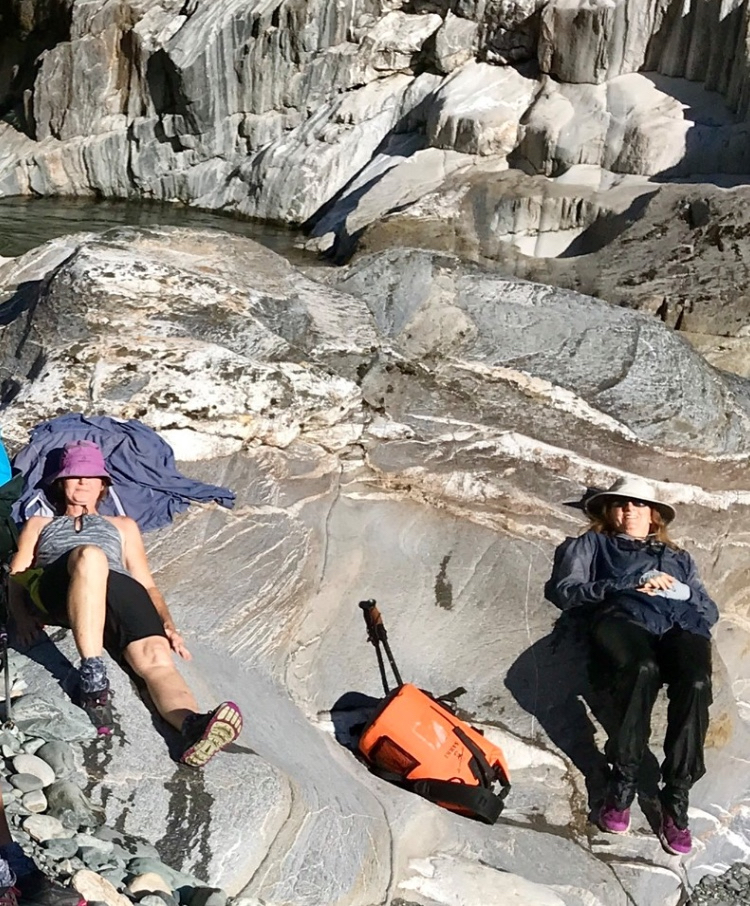|
Nov 29, 2020, 7:22 AM (2 days ago)
|
  |
||
|
||||
November 27, 2020
To: Central Region Water Quality Control Board c/o
Greg Hendricks, California State Water Quality Control Board
From: Alliance for Environmental Leadership
RE: 5A31CR00548 Placer Ranch Project
The Alliance for Environmental Leadership (AEL) is a coalition of sixteen (16) environmental and civic organizations in Placer and Nevada Counties. We herein jointly ask that the State’s Central Region Water Board to deny the application for a grading permit for Placer Ranch Project Application 5A31CR00548. The County of Placer as project applicant, caused the citizens of Placer County to fund all predevelopment costs for studies and environmental analysis. As project applicant and “decider”, the County was in no position to perform a critical analysis of project costs and benefits.
We thank the Central Region Water Control Board for accepting comments on “Project Application 5A31CR00548, Placer Ranch Project”. The Project consists of mass grading activities on 3,000 acres of west Placer grassland that is home to some of the County’s last vernal pools, 14 listed endangered species, and a healthy Pleasant Grove Creek riparian corridor. All this will be lost to prepare for construction of low-density high-cost single-family sprawl housing and mixed-retail/commercial uses in this unincorporated area of Placer County.
The project will destroy carbon sequestering agricultural lands, grassland, vernal pools and wetland which provide essential flood control services and replace them with impervious surfaces. We urge the Water Board to fulfill their duty to enhance and protect these natural ecosystem resources, particularly in this time of climate crisis; and apply rigorous scientific review to verify information provided in the application before you. We ask the Water Board to also consider whether a 401 Permit for this project will be in violation of a range State policies and Governitorial directives including, but not limited to: 1) agland conservation, 2) Statewide CO2 reduction, 3) vernal pool preservation and 4) groundwater protections.
The Placer Ranch project has provoked extraordinary public interest. In the Final EIR hearing, over 77 written comments and as many oral comments were delivered from citizens who are concerned for the project’s 60 significant and unavoidable environmental impacts and its failure to provide any safe affordable family housing. Rather than simply oppose the project, citizens self-funded a fully-developed and economically-supported alternative, the “Citizen Initiated Smart Growth Plan (CISGP)”. Unfortunately, during the public hearing, citizens were subjected to threats and intimidation from the County (there is video recording of these incidents) and were unilaterally denied their civil right to meaningful participation in the governing process. In contrast, Placer County, as project applicant, allowed attorneys for Placer Ranch, Ltd, special privileges, including using the Board of Supervisors Chambers as, in essence, a courtroom, where during closing arguments, they systematically refuted citizens’ comments. Citizens were afforded no opportunity for rebuttal.
The consultant for the Placer Ranch’s project EIR, Assent Engineering, also proposed less environmentally-harmful alternatives (that met County objectives) to the Placer Ranch/County’s development. In certifying the project EIR, Placer County Board of Supervisors rejected both the CISGP and the EIR’s consultants three (3) environmentally superior alternatives. Subsequently the Center for Biological Diversity (CBD) sued the County, challenging their authority to harm people’s health and welfare and harm the environment. This pending lawsuit does not prohibit the developer from setting bulldozers to work.Despite the pending lawsuit, the County acting as the developer and Placer Ranch Ltd. (property owner) have applied for a 401 Permit from Central Valley Water Resources Board to proceed with massive grading.
In contrast, the CISGP design protects the ecosystem services provided by the land and respects the seasonal changes of the natural systems. It also delivered on the County’s job center vision by providing comparable employment and business opportunity. It sets straight the jobs housing balance, enables public transit and supports quality of life and character of place. The CISGP provides twice the number of housing units than does the Placer Ranch/County’s development plan; with units priced to match incomes of future workers.
The Placer Ranch site is critical habitat for 14 Federally listed endangered species and supports rare high quality vernal pool habitat and farmland. It was clear that the developer, Placer Ranh, Ltd’s., 307 acre donation for a California State University Campus was being used as “bait” to cause the Board of Supervisors to rezone farmland and vernal pool wetland for a development that, according to the project EIR, will create an extraordinary 60 significant and adverse environmental impacts; among them, air quality degradation from 570,000 new daily vehicular trips, 1.5 billion pounds of greenhouse gas emission each year.
Attached hereto is the Citizen Initiated Smart Growth Plan (CISGP) an environmentally superior development vision for West Placer County which AEL produced and submitted as a comment to the project EIR. The CISGP meets Placer County growth objectives, provides and reduces greenhouse gas emissions by 75% per capita over the County.
As explained in the CISGP page 82-91 below, project setbacks standards are wholly inadequate to provide adequate filtering, protect natural stream meanders and slow runoff which will otherwise cause erosion and effect less water absorption.
As described on page 96 of the CISGP the nature of soil in the project area will create bulge effects during the wet season which will cause foundation and road cracking. The only way to ameliorate this situation is to remove soils to significant depth and to replace them with a concrete like additive. The impact of deep grading and soil reconstruction to avoid the seasonal bulge of soil (as it seeks to absorb water) and the effect of what will be essentially underground barriers to natural hydrologic functions on the site is not considered in this project application. There are two watersheds in the project area. The CISGP provides FEMA and USGS maps on p. 87 that will be useful to the Water Board in analysing these hydrologic issues. We ask the Water Board to consider the effects of deep grading and soil reconstitution on the four existing wetland and vernal pool mitigation banks that are within the project area.
The Placer County Report of Science Advisors, Jan, 2004, states that urbanization has resulted in substantial losses of vernal pool ecosystems in Placer County. Vollmar Natural Lands Consulting estimated in 2014 that of Placer County’s 117,289 acres of vernal pool habitat, 75% had been destroyed. For the purposes of this application, the developer/County created a Grassland and Vernal Pool Delineation Map through aggregating multiple sources which did jot use a consistent research method. The County’s map, on Page 106 of the CISGP differs significantly from a comprehensive,single study map prepared by Carol Witham, John Vollmar and John Schweitzer, commissioned by the US Fish and Wildlife Service, As shown on page 107 and 108 of the CISGP, the County’s map and the USFWS map have many significant differences in both the location and diversity of vernal pools. We ask the Water Board to seek a reconciliation of these differences from the County and USFWS before consideration of the subject application
The Placer Ranch project is dependent upon a number of major capital improvement projects/programs that are not currently in effect. It is inappropriate to approve this application before infrastructure critical to project implementation are approved, funded and a schedule for implementation is known. Among these major capital projects upon which Placer Ranch depends, but which are only speculative at this point are:
-
The Placer County Conservation Plan (“PCCP”). The PCCP however is adopted at the local level but has not been cleared for implementation by regional, State and Federal level.
-
The Ophir Water Treatment Plant which was to break ground in 2018. Not only did that NOT happen, according to Placer County Water Agency (PCWA), it could be 2029 before they break ground
-
The Pleasant Grove Retention Facility is a project of the City of Roseville and would cause nearly 1 million cu yards of riparian corridor, farmland and wetland to be excavated to capture storm runoff from Placer Ranch. It is discussed at length in the EIR but to date, there is neither funding, and environmental analysis or implementation plan for the Pleasant Grove Water Retention Facility. Placer Ranch has put forward no alternative plan for on site stormwater retention. There is no Placer Ranch project without it.
-
The Groundwater Sustainability Plan is not and will not be finished for yearsThe Placer Ranch project/EIR counts on recycled water quite heavily, but the means to utilize recycled water rather than groundwater is only speculative as there is no plan for how recycled water will be captured and safely utilized. The Placer Ranch project EIR indicates there are presently two existing PCWA wells drawing at 1000 acre feet per year. And it also appears to indicate that two new wells would be drilled for the project in the event that primary water supply for Placer Ranch (which is from the North Fork of the American River is depleted). The new wells are proposed to have a capacity of 1000 acre feet per year. The EIR states that the wells will only be employed in drought years and only once per drought year . There is no plan if there is a persistent multi year drought. Water from the American River is critically oversubscribed. Only three years ago, Folsom Lake was drawn down severely and emergency water rationing was imposed on Folsom residents. If River water is diverted to Folsom and to support salmon fisheries, will groundwater substitute for North Fork supply to Placer Ranch? How will ground water pumping be monitored? How many wells are anticipated to be part of the project – 4 wells altogether for dry year water production, or are there only two wells (e.g. the present PCWA wells)?
-
The Placer Ranch EIR did not consider the 6 new wells proposed by the City of Lincoln for Village 5 when analyzing cumulative impacts to groundwater supply.
-
There is no condition or mitigation measure that is enforceable that will limit the wells to single-dry year pumping only.
-
The Placer Ranch EIR discusses the monitoring of adjacent wells during the use of the Placer Ranch/Sunset Area Plan wells to determine potential adverse impacts to groundwater supply. However, the EIR does not specify what is considered to be an adjacent well. It is undetermined therefore if existing agricultural wells north of the Plan area be included in the monitoring program.
-
The Placer Ranch EIR and development agreement fail to specify conditions or enforceable mitigation that would compel and enforce such well monitoring.
-
There is no analysis of the impacts of dry-year pumping on flows in Auburn Ravine and Pleasant Grove Creek. Nor is there any analysis of the impacts of well pumping on four existing wetland and vernal pool “Mitigation Banks” within the Sunset Area/Placer Ranch project area. Wouldn’t dry year pumping of over 2000 to 4000 acre feet per year of groundwater potentially impact flows in Auburn Ravine?
-
The project EIR states that little to no flows existed in Auburn Ravine during the Fall season. This is incorrect. The Scheiber family which has farmed in the Auburn Ravine watershed in Lincoln, has diverted water from the Ravine for 100 years and before delivery from PCWA, there was adequate fall flows to accommodate water diversions from the Ravine for use on their property.
-
If at some point in the future, the wells are to be used more often than as set forth in the EIR, will there be a requirement for additional environmental review prior to allowing any additional pumping? Should pumping be an allowed use for a new city, when groundwater supply is unknown?
-
It is undetermined if municipal wells would have priority over an overlying groundwater right of existing farmers and homeowners. The County has done no analysis of impacts of pumping proposed for the Placer Ranch/Sunset project on existing overlying wells for agricultural uses. Neither has the public been informed or Placer County nor PCWA determined if wells for the SA/Placer Ranch project will have priority over landowners with existing overlying groundwater rights. Why not?
-
There is no plan, mitigation measure or contingency – or study – relating to the potential for contamination of groundwater from the Landfill. Why was this information omitted from the EIR? While the EIR references the landfill and its regulation by the RWQCB – there is no contingency or evaluation of potential contamination to groundwater resources. In section 4.9.2, page 4.9.6, under Groundwater Quality; it says “Contamination of groundwater with VOC’s was first identified at this site in 1995” (landfill). If there are a total of four wells that all get turned on in times of drought, as well as all of Lincoln’s wells, what will the cumulative effect be on spreading the contamination throughout the “regional cone of depression” that is discussed on page 4.9.6 under Groundwater Hydrology in the Project EIR?
-
The application and Project EIR fail to address groundwater recharge and the impact of deep-well pumping on existing agricultural operations and regional ground-water users.
-
Another source of groundwater contamination is the Carvana project. Placer County recently approved the Carvana project, a 10,400 used car lot and repair facility on vernal pools and wetlands in the Sunset Area. This project includes a 200,000 sq. ft. four -ane assembly-line, employing 850 laborers, for removing existing oils and solvents from used cars and replacing them with new. In the absence of the Pleasant Grove Water Retention Facility, the Carvana project will store water run off on its 111 acre site. The Carvana project owners are among the most egregious companies cited by OSHA for groundwater contamination. This project was approved subsequent to the Placer Ranch EIR and should be considered as a cumulative impact.
-
Stormwater runoff is proposed to be contained in the Pleasant Grove Water Retention Facility in Roseville – which is not constructed and for which no funding plan nor environmental analysis has been prepared. Additionally, the application and the Placer Ranch EIR fail to address storm water retention and flooding as a result of climate change and the short and long term changes climate change will cause to the Sierra snowpack. The County does not control either one of those flood water retention sites AND neither one, as mentioned earlier, is complete; so is the flooding problems that this application will cause, are irrosolved.
-
The EIR failed to analyze downstream impacts of paving over more than 400 million square feet of natural catchment area in the Placer Ranch development site in the short and long term. Climate modeling was not performed as a part of the project environmental analyses. Can this Water Board certify that seasonal changes across this natural systems will not cause downstream flooding? How will sediment, water temperature, phosphorous and other pollutants flooding the American River and Sacramento River and Delta and their tributaries affect fisheries health and public safety?
Another noteworthy issue is the fact that the Placer Ranch property is in the County’s smell buffer – so designated to protect the County’s $30m investment in our landfill. Below is a map of smell complaints received by the Western Placer Waste Management Authority from citizens living outside of the smell buffer. The 3,000 Placer Ranch acres are sandwiched between these complaint sites and the dump, as seen in the image below.
It seems incongruous that a government charged with protecting the public health and welfare would consider placing a new city on this site. The impetus was the promise of a California State University Campus. The Placer County Board of Supervisors valued the promise of a CSU on 307 acres that the developer donated to CSU over the health and well-being of thousands of families and students who would live and study in the smell-buffer zone.
Sadly, CSU released a study on July 2, 2020, only three months after Placer Ranch project approval, that determined that no new CSU campuses are warranted; so Placer will never see the promised campus, but is continuing to advance the Placer Ranch project.
The project site is within the Pacifc Flyway and supports vast numbers of migratory fowl. The application fails to address Project impacts to resident and migratory bird populations or its consistency with the Migratory Bird Preservation Act. Of note, is the status of the site as supporting the 2nd highest density for raptors in the USA.. To presume that these populations can simply “move” fails to consider that ecosystems outside of the project are at their natural capacity. Introduction of power lines and urban landscapes will adversely impact Burrowing Owls. Burrowing Owls specifically chose to live where perches are absent – a mechanism to avoid predation.
The application does not address impact to the listed Western Pond Turtles and several salamander species which are proposed to be relocated as a project mitigation. The relocation plan for these species fails to address the fact that these species forever travel to return to their native nesting sites and therefore cannot be successfully relocated.
Listed Spadefoot toad exist in high density populations within the project site. The application fails to satisfactorily address impacts to Spadefoot toad populations and if relocation is a option for the species. What monitoring measures are proposed during construction are unfunded, unscientific and will not result in population protections.
The application inadequately addresses impacts of CO2 generation from the project site. The EIR describes CO2 emissions as globally significant. The mitigation which is proposed for the anticipated 1.25 billion pounds of annual CO2 emission is in offsite locations, in violation of State statute.
AEL herein requests that the Placer Ranch Project Application for a 401 Grading Permit be denied because it does not provide any on site storm water retention to address the massive alteration of natural lands to impervious surface, is incomplete and contains egregious errors. We understand that growth into natural systems may be inevitable, but the Governor has set policy so that we can grow smarter – deriving many benefits, leading by example and applying a diversity of thought to face new challenges to our common survival. 5A31CR00548 Placer Ranch Project fails provide benefit in any way, shape or form and by virtue of its lamentable design, would contribute on a global scale, to severe degradation of the environment that sustains us all.
Thank you for the opportunity to provide comments on 5A31CR00548 Placer Ranch Project.
Sincerely,
Leslie Warren, Chair
Alliance for Environmental Leadership
Citizen-Initiated Smart Growth Plan Phase 1 URL: bit.ly/CISGP1
Citizen-Initiated Smart Growth Plan Phase 2 URL: : bit.ly/CISGP_2







